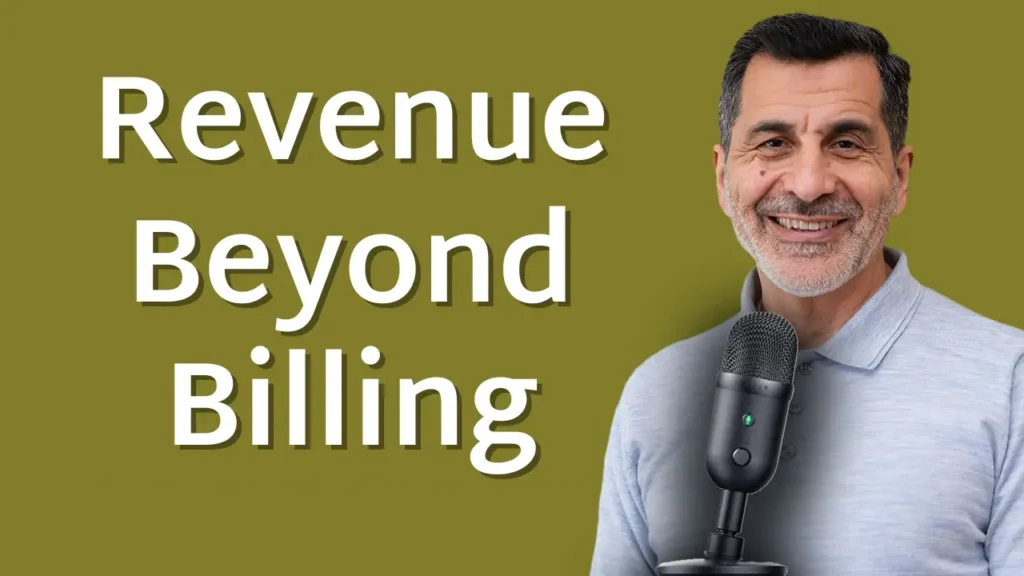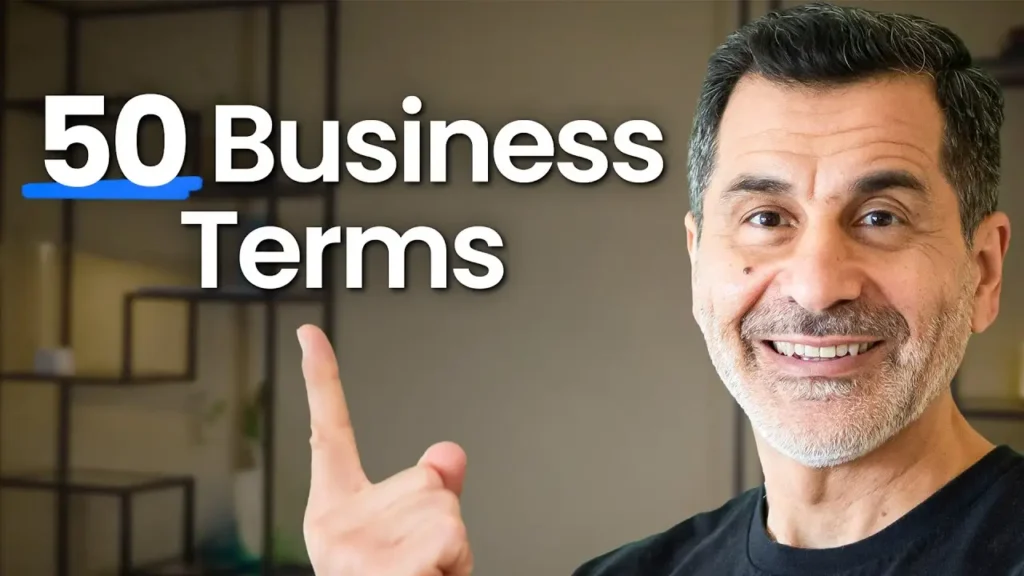Your Business Plan Needs to Address 7 Audiences

You need a business plan. I’ve said it before, and I’ll probably say it a hundred times more. No one should be in business without a firm idea of how the business will run, perform, and achieve the objectives and vision you have for it.
But who’s going to read that plan? Answering that question before beginning can help you decide how to write the plan, because every business plan audience has their own needs. Carefully consider who your plan is for.
Not a big reader? Watch my video about this topic!
Audience #1: You
When Alice was lost in Wonderland, the Cheshire Cat advised her that if she didn’t know where she was going, any road would do.
To many entrepreneurs, it makes sense to have a business plan when meeting with an SBA advisor, a loan officer, or even friends and family who could contribute. But the most important reason to write a business plan is to clarify your own thoughts.
I’ve advised many entrepreneurs to do this first. By forcing yourself to develop a plan as if you were seeking funding, you get insights, a better appreciation of the work needing to be done, and spot potential obstacles.
It’s sad that, according to a Wells Fargo survey, only 33% of business owners have a formal business plan. But they go on to say that, “those with a plan also have significantly higher expectations for the year ahead than those without.”
Having a written plan matters.
If you aren’t sure where to begin, you can visit my post on writing a business plan.
We all have blind spots, however. So while drafting your business plan, do your best to remain objective, seek to poke holes in your own ideas, and invite a mentor or trusted members of your network to give you critical feedback.
But, and I must make this point crystal clear, write it!
Audience #2: Your Team
Maybe this is you. You’re already up and running, you’ve got clients, you’ve got a team. Do you still need to write a business plan?
Some entrepreneurs don’t write a plan until the business is underway. Hey, sometimes jumping in with both feet works, but when I advise struggling entrepreneurs, I often ask to see their plan. They then give me a sheepish, knowing look that suggests, Yeah, about that, I haven’t got around to writing one. It’s often this lack of foresight and planning that has indirectly caused their current struggle.
I’ve made plenty of my own mistakes, so I will not point fingers. If this is you, yes you still need a plan, even if you’re not seeking funding.
Let me lay it out straight: you can’t run a company well without a clear vision for where you’re going. And you can’t make fast progress toward your vision unless you have buy-in from your team.
Buy-in means that every team member understands and supports what you’re working to achieve. They are engaged and willing to show up every day to make the plan happen. And getting buy-in, their feedback and acknowledgment regarding the mission you’re on together, helps you achieve your objectives faster.
“But wait,” you might say. “I’m the boss. This is the direction I’m going, and they don’t have to like it.”
You’re absolutely right. They don’t need to agree with your plan. But buckle up, because it’s going to be a bumpy ride (bumpier than it should be).
Getting their buy-in doesn’t mean that you’ll agree to every request or seek 100% approval of what you want to do. Getting buy-in means listening your team’s concerns, needs, and insights. You’d be surprised how insightful and creative even entry-level or intern-level employees can be when they feel you really want to hear what they have to say.
And when your team feels like they’re actually part of a team (what a concept), engagement increases. So, yes you’re the boss, but a disengaged team will make achieving your goals nearly impossible.
In fact, Gallup showed the staggering difference between high-engagement versus low-engagement teams:
When Gallup researchers analyzed the differences in performance among business work units, the benefits of employee engagement were clear. When comparing employee engagement levels, Gallup found that top- and bottom-quartile business units and teams had the following differences in business outcomes:
- 81% in absenteeism
- 58% in patient safety incidents (mortality and falls)
- 18% in turnover for high-turnover organizations
- 43% in turnover for low-turnover organizations
- 28% in shrinkage (theft)
- 64% in safety incidents (accidents)
- 41% in quality (defects)
- 10% in customer loyalty/engagement
- 18% in productivity (sales)
- 23% in profitability
A solid business plan won’t only clarify your thinking, you’ll have a more engaged workforce who may have helped you avoid pitfalls in your thinking.
Audience #3: People Who Could Finance Your Business
If you want to grow, at some point you’re most likely going to seek outside funding. Not every business needs this funding, but if you do, then you obviously need a business plan.
Yes, Shark Tank is a fun show where people hone their presentation skills to wow Mark Cuban and company. If you’ve ever watched the show, you know they ask tough, pointed questions. The answers to those questions come from a business plan.
And maybe you’ve been in business for a while and are now drafting a plan because you’re seeking money from bankers, loan officers, or investors.
For this audience, a napkin or legal-pad plan won’t do. And don’t even think about Canva. For money people, the plan needs to be polished and well thought out both in content and aesthetics. The numbers have to be accurate, most obstacles and potential setbacks considered and called out, and the plan needs to reveal how you will use the investors’ money. More importantly, they will want to know when they can expect a return.
Can you write this business play yourself? Yes… but…
If you aren’t a skilled writer or are guessing at more numbers than you’re finding in actual verifiable data, or your business involves multiple complexities, you may hire professionals to help you.
Investors and bankers are people too. They are looking for sound ideas and opportunities. They want to help others succeed (and therefore themselves), and some investors are more than willing to make the occasional high-risk investment. But in order to win them over, the plan needs to be solid, with full transparency, and zero embellishments. If there’s information you or your consultants aren’t able to verify, say so. In the end, no one can truly predict the future.
At the very least, hire a graphic designer with layout skills to help you organize and present this data. Even with the best of information and figures, a Comic Sans font and Microsoft clip art won’t win you any favors.
Don’t Have More Than One Plan
It might be tempting to create different versions for different audiences and circumstances, but this only invites the opportunity for mistakes. A change to one document might not be reflected in the other.
Audience #4: Friends and Family
Friends and family are the most common source for seed money. At the next function or game night, you talk them up about your idea, how no one else is solving the problem they way you will, and how much money they’ll make if they trust you with a few thousand dollars.
They probably love you and many will hand over the money, no questions asked. But just because they give more openly than a Silicon Valley VC will doesn’t mean they’ll sleep any better at night.
A solid business plan can help put your friends and family at ease and win them to your side.
Borrowing money from these people can be tricky. It can make future holiday gatherings uncomfortable when they ask how things are going. The underlying question is, “Will I get my money back?”
So aside from helping with your own clarity and vision, writing a business plan for this audience will help them see exactly what you want to accomplish, why there’s an opportunity, and how you plan to use their money.
Obviously, the plan can be informal. And unless you grew up in a family with extraordinarily high expectations, no graphic designer is needed.
Finally, in the Executive Summary, you can include a personal letter where you can let your feelings for them and passion you have for your vision shine.
Audience #5: Potential Co-Founders or Business Partners
An often overlooked audience for your business is potential partners. Those people who will help in the funding and running of the business.
Some partners might be childhood friends who are bringing their own seed money and unique skill sets to the table. Others might be more formal business contacts and network connections who will get equity shares for funding, consulting, or labor.
The sophistication of the particular potential partner will determine just how thorough and aesthetic the plan needs to be. Just one note here regarding partnerships: As partners join, revise the business plan to include those new partners and their agreed upon responsibilities. Nothing dissolves a partnership faster than unclear expectations. As author Neil Strauss quipped, “Unspoken expectations are premeditated resentments.”
Audience #6: Suppliers and Vendors
Another often overlooked audience for your business plan is suppliers and vendors. Whether SAAS (software as a service) or subcontractors helping you launch, a business plan can help solidify these partnerships.
It’s a common strategy to seek deals and discounts with vendors, especially in the early stages when cash flow is tight. It’s one thing to hop on the phone as tell Mrs. Vendor she should give you her best discount because you’ll be growing fast and sending a lot of business her way, and another to send her a strong business plan that shows your strategy for growth.
Many vendors hear the “I’m going to grow/we’re going to be rich” pitch as much as freelancers hear “I’ll give you exposure” (don’t say that either). But by including them in your audience, you can back up your bold claims and build confidence in your projections for a long-term arrangement, leading to deals and discounts.
Audience #7: Strategic Partners in the Eco-System
If you have an established relationship with a strategic partner, let’s say a supplier, and you’re providing professional services, that strategic partner might look for a few partners like you to include in supporting a rollout of a new product.
Companies do this all the time. For instance, let’s say Oracle was planning to launch a new software solution to augment their HR products. They would look for help from their partners to build a large customer base quickly to help it gain traction in the market. To do this, they would offer discounts or compensation to partners who have showed they are top performers.
If you haven’t looked into these partnerships, see my videos on finding and building these partnerships here.
And if you already have these strategic channel partnerships, besides showing up and getting noticed, sharing your business plan with your contact can get you noticed. This favorable attention could give your business a tremendous first-mover advantage when they consider who to enroll in early rollouts.
Additional Audiences
The above are the most common audiences your business plan will need to address, but depending on your industry and/or your specific needs, you might have to share a business plan with regulatory authorities, potential buyers/mergers, grant providers, advisors/mentors/consultants, clients, and even competitors (in the case of strategic alliances/joint ventures, as examples).
Key Takeaways
Whether your business plan audience comprises only you, or a variety of teams, partners, suppliers, and potential investors, you must write one. How it’s written and presented depends on the audience.
To help you consider who might be in your business plan’s current or future audience, I encourage you to spend some time to expand your thinking. There may be another audience I haven’t considered here.
Here are those audiences again:
- You. At the very least, get your thoughts, ideas, and expectations down on paper. Don’t worry about being rigid. Pencils have erasers for a reason.
- Your Team. Sharing your vision is one thing. Letting your team see the roadmap to that vision is another. Get their input and suggestions to foster buy-in and increase engagement and performance.
- Bankers and Investors. Of course they’ll want to see a business plan, but consider writing that plan more professionally or getting outside help if your plan is especially complex. At the very least, consider hiring a graphic designer to help make the plan aesthetically pleasing.
- Friends and Family. They love you and want to support you and will take you at your word. But a plan makes the entire process easier.
- Potential Partners. Get your potential partners on the same page, let them see the opportunity for themselves. Then revise the plan as partners join so that the division of responsibilities and expectations are clear.
- Suppliers and Vendors. Having a plan for long-term growth can help you get favorable deals and discount by showing you can perform on your promises.
- Strategic Partners. They look for partners who show up and help them server their clients. A plan can go a long way to proving you are one they can count on and may open the door to early rollout opportunities.




